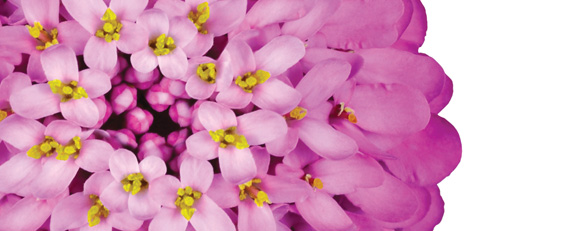Flower Power: Choosing Color to Last All Summer
Spring is upon us and the garden centers are hopping with gardeners eager to get their hands in the soil. But sometimes frustration develops as the calendar moves through the summer and the once vibrant color of the initial planting season has faded.
To have color in the garden all through the warm months, areas experts make some suggestions before putting a single plant in the ground. “Assess the situation where you’re planting, like how much sun it gets and maybe what the soil is like. I would first recommend a soil test kit. You can get those at garden centers. Penn State has a great test kit, you pay a fee and then they mail back the results to you. Then use their recommendations,” said Thomas Bull, owner of Herbein’s Garden Center in Emmaus.
“The other thing to consider when you’re first planting is the use of a good organic soil amendment like compost. Using leaves and grass clippings and kitchen waste is absolutely the best thing to do,” said Tom Tilley, owner of Tilley’s Nursery Inc. in Coopersburg.
To enjoy eye-popping color all season, the pros recommend mixing perennials and annuals with staggered blooming times that are appropriate for zone five, which encompasses the Lehigh Valley.
“In the independent garden centers you’ll get all the help you need. They have people on staff that love what they do. Many of the garden centers here will have the plants started when the time is right. They also have seeds if you want to start your own plants,” Bull said.
Tilley added, “Bring pictures of something you like. Bring your home pictures and measurements and start a dialogue with the nursery person. Know what your soil type is. If it’s had shrubs and plants in the existing bed then we know there’s probably a lot of mulch already in the bed. But if someone comes in and says they’re planting this new bed, then we need to talk about soil amendment and mulching follow-up.”
When it comes to specific plants that generally grow well in this region, Joanne Lee, nursery manager of Neighbors Home & Garden in Hellertown, recommends: “In the early spring, late March, pansies can take a lot of changes in weather. They herald in the spring in addition to spring bulbs. They can be cut back and they will start looking good again in the fall when it gets cool. Weather is a big factor. If you plant annuals too early you can lose them if you get a frost. You can get scattered frost in May, yet.”
“As you go on past the May 15 official frost date you can get into tried and true annuals, then you can also get into your late spring or early summer blooming perennials,” adds Lee.
Use what’s blooming in a garden center as a guide for what will bloom in your garden. Some dependable blooming flowers include coreopsis with its Zagreb variety providing a long bloom time. Others to be considered are the summer blooming hypericum and older varieties such as black-eyed Susan and purple coneflower that will bloom in summer and fall. Salvia is a good choice because it blooms early in the summer and again later on if the dead blooms are cut back. Super-tunias have a long bloom time.
In the annuals, some flowers that will give you color all summer long are cosmos, zinnias and marigolds for some sunnier locations. If you have some shadier situation there are plenty of plants for those areas, such as begonias. Hostas bloom only a few weeks but then they have big bold leaves that bring interest the rest of the year.
Bull also recommends “candytuft, that’s an early one, astilbe comes in next, then there are some daylilies that bloom throughout the summer, and then sedum in late summer, and follow up with mums or asters for the fall.”
Flowering bushes often provide a good foundation for any bed. Knock out roses are bushy in their growing habit and can grow three to four feet high. They provide a long bloom time and they’re not as prone to the diseases that roses can get. Other flowering bushes include azaleas, rhododendrons, forsythia, and the spring and sometimes summer blooming spiraea and viburnum.
A trellis also makes a great place to plant flowering vines such as a trumpet vine and clematis, which blooms in the early spring with some varieties re-blooming later.
Tilley said, “The other thing to throw into the mix are the plants with variegated leaves. That can be added for a focal point or some interest without just being the straight green.”
Once you have your beds completely planted, don’t neglect them. “Watering is probably the biggest problem that customers don’t realize,” said Lee.
Deadheading and trimming will encourage more blooming on many perennials, woody plants and annuals. Mulching helps to control weeds, provide nutrients, and conserves moisture in the soil. The use of water-soluble fertilizer a few times a season, every four to five weeks depending on the fertilizer, is also recommended.





